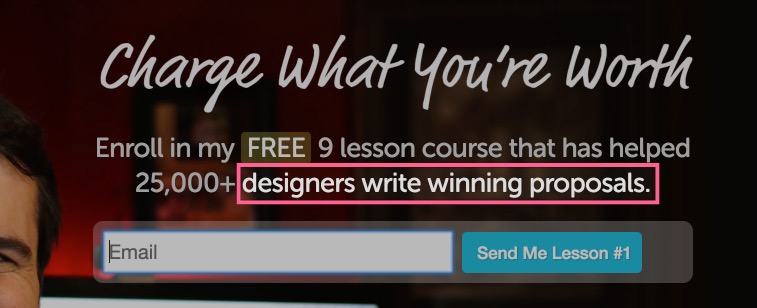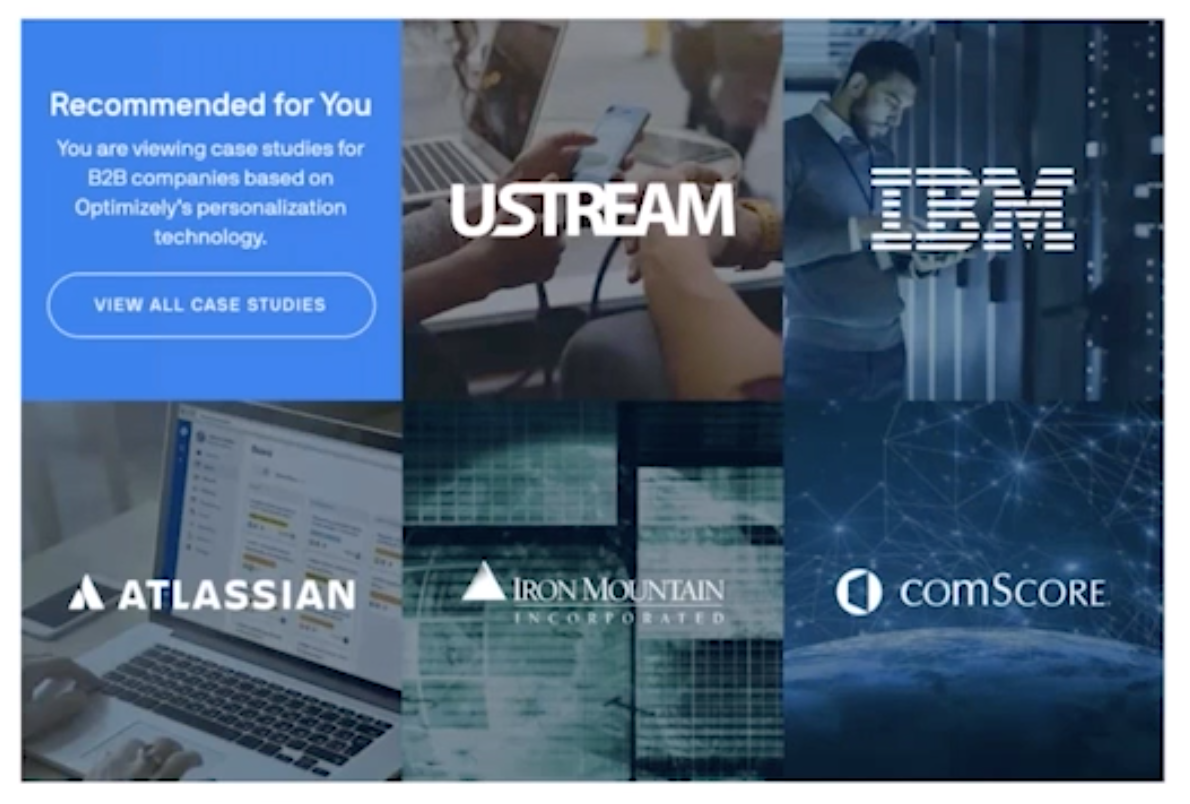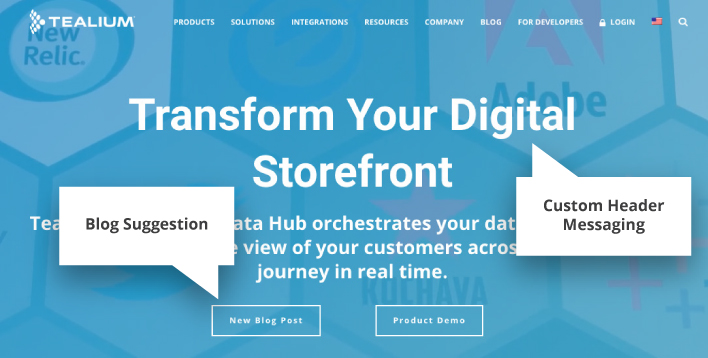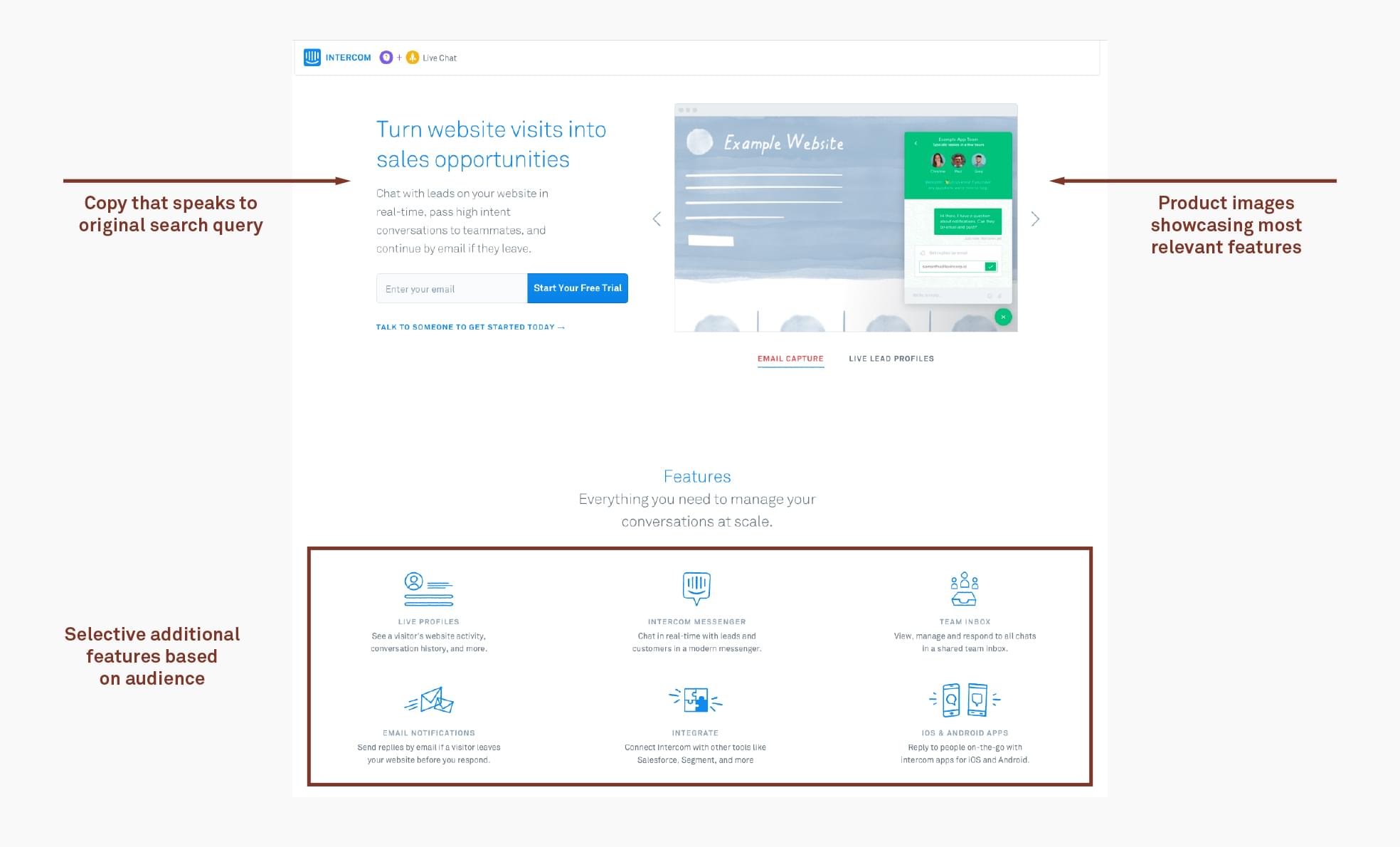5 ways to personalize your website content
Any good pitch takes the batter audience into account. A sales rep who can connect a lead's problem with a solution will be more successful than a sales rep who delivers the same spiel to anyone who comes in the door.
The same goes for websites. Unless you have a one-size-fits-all product or service, a one-size-fits-all website won't fit the bill.
Personalized websites are dynamic — using data about site visitors, such as demographics, firmographics, and previous interactions to determine what content is most relevant to display and what specific experience to deliver. This tailoring helps establish a meaningful connection, a reason to stop and listen to what you have to say.
Done right, web personalization facilitates the path to conversion for the leads you most care about. In this article, we'll break down how you can improve conversion with personalized web content — starting by identifying your audiences and customizing specific site elements for those audience segments.
Or jump ahead to:
- Defining your audience
- Headlines and heros
- Call-to-action(s)
- Customer testimonial / logos
- Product or plan features
- Featured blog posts
The first step: defining your audience
You can't connect with anyone without understanding who they are. First, you'll have to define your personalization audiences. An audience in this context, as marketer Cara Harshman explains, is "a group of site visitors with a specific need that deserves a unique experience."
There are three types of data you can use to build your personalization audiences:
- Behavioral data: Did your website visitor browse your product plans? Click on a certain CTA? Read a couple of blog posts? Download an ebook? Behavioral data will give you insight into how visitors have interacted with your site — it's like your conversation history with them.
- Demographic or firmographic data: Get data attributes such as geographic location or company size and industry, based on the visitors IP address.
- Contextual data: This is information about a person's situation when they visit the site — like what device or browser they're using, whether they're new or returning, or what source or referral they're coming to your from.
Once you have a system to collect data on your site visitors, choose how you want to segment your audiences, which will then inform how you'll customize site content. For B2B audiences, this might include attributes like:
- how many employees work at the company
- industry or subindustry of a company
- what technology the company uses
- where the company or visitor is located
- whether the visitor reads your product plan pages (and which one)
- what job role they have based on data enrichment, surveys, or trends on what type of content a visitor is engaging with
Will customizing for these audiences bring value?
It's not practical to customize your website for every single group you encounter. A site visitor should "qualify" for personalized treatment based on whether they match an attribute in your ideal customer profile or some other segment that you're trying to target.
Confirm that the audiences you choose:
- can confidently be identified (there's sufficient volume and accuracy to move the numbers)
- are valuable to your business (they're worth the effort to strategically personalize sales and marketing experiences)
- benefit from special treatment. Does the audience actually gain any value from a tailored web experience? For example, for a file-sharing tool, a very tiny company has different needs from a very large one, and it won't matter so much whether you personalized based on being in Maryland versus Connecticut.
Once you know who your audience is and whether you'll personalize for them, it's time to start creating different variations on your website.
5 ingredients of a personalized website
You can approach website personalization as a modular project, where change various elements to match your audience rather than creating full-scale page or entire site variations.

Decide which types of content to change — it could be just one section to experiment with, or it could be several — and which pages to put into play (high traffic and high intent pages are good places to start).
Let's go through five elements of your marketing site that you can personalize — and ideas for what you can do for each.
1. Headlines and heros
For most site visitors, the homepage and other key landing pages are the first touch point they interact with. The headline here is the best opportunity to speak directly to high-value leads as early in the lead journey as possible.
Check out how Tealium, a customer data hub and tag management platform, changes their headline on the homepage for a site visitor from an e-commerce company:

A visitor from a financial company would see a personalized headline that said: "Invest in your customer data."
What you can do:
- Customize your header text and image for specific large companies. Optimizely, for example, personally greets valuable named accounts — using IP addresses to determine the target company to tailor their header accordingly:

-
Tailor the subheading beneath your headline for your different customer categories. Create different variations for each key category, using whatever attribute differentiates your target segments (like industry, company size, role). Here's an example from Double Your Freelancing, customizing the subheading message for designers:

-
Customize the hero image for your target audiences (where it makes sense) — based on geography, for example, if you have a bookings product, or industry — to reinforce your connection and fit.
2. Call-to-action
The CTA is a great spot to personalize — whether it's the last bit of persuasion to get someone to click through or to serve as the door to a different, tailored experience.
Let's say you're a SaaS company that offers two plans: a basic plan and an enterprise plan. You want to talk to larger companies to provide a more custom approach, and it doesn't make sense to spend that much 1:1 time with smaller companies.
In that case, you would use company size (based on employee count) to determine which CTA a site visitor would see, like so:

This is what Drift does, as growth marketing specialist, Sara Pion explains. Drift created different calls-to-action "to create a more touchless experience" for bad-fit leads to move forward with creating a free account and "to leverage a conversation" with target leads. This approach generated more meetings booked, which translated into higher MRR.
What you can do:
- Only show certains CTAs (talk to sales, get in touch, demo requests, webinars, etc) to visitors who fit your target audience.
- Send known customers to learn about or try a higher-tier plan.
- If you have an upcoming event that's happening close to where your site visitor is based, feature a CTA to learn more and register.
- Change the CTA on your blog to encourage the reader to sign up for a trial if they're a returning visitor or have downloaded a piece of content already.
3. Customer testimonials / logos
Customer testimonials and logos on your website act as social proof, improving conversion by establishing your brand's credibility and relatability.
You can tweak the examples to relate with your audiences, with different buckets of logos and testimonials to match your different audience buckets. Visitors from the tech industry can see customer testimonials from technology companies while visitors from retail see customer testimonials from retail companies.
 logos from Optimizely homepage
logos from Optimizely homepage showing more software-related companies
showing more software-related companiesHere's a peek at an experiment from Optimizely. They displayed case study recommendations based on the site visitor's industry on their customers page — and found that clicks went up by over 40%.

What you can do:
- Personalize logos on the homepage of companies in the same industry or in the same geographic location.
- Serve up a customer video testimonial that matches target company size on a
/customerspage or on the homepage. - Highlight customer stories related to role or business type — to better match the circumstance of your site visitor.
4. Product or plan features
If you're catering to more than one type of customer or offer more than one product, highlight specific features or solutions that will resonate most.
For example, when Intercom created landing pages personalized to the use case that drove visitors in from Google Ads campaigns. The landing pages showcased the most relevant product images and features:
With this approach, Intercom saw more than triple the conversions, compared to a standard landing page.
What you can do:
- Highlight a specific product, features, or plan on key pages based on your audience's firmographic attributes or referral context.
- Shuffle the order of product features on the homepage, product, or landing pages to give the highest visibility to the most relevant ones.
5. Featured blog posts (and other content)
Blog posts are useful for engagement along the path to conversion. You can personalize your website to feature blog posts that are most likely to engage a certain audience based on specific attributes, including firmographic data, such as the industry a reader works in, and behavioral data, such as the blog posts a reader has read.
 Another great example from Optimizely
Another great example from OptimizelyWhat you can do:
- Recommend blog post and resources, especially how-to's, customer success stories, and other product-related or educational pieces based on role.
- Suggest blog posts that consider previous behavior, such as downloading an ebook or reading about a certain product or plan you offer. Here's another interesting example from Tealium, tailoring the homepage to a site visitor, again from a retail company but who also has history of reading the blog:

- Showcase specific posts, offers, and webinars on a log-in page.
- On your homepage, keep qualified leads on your site longer by displaying blog posts and lower-funnel content of interest.
Make it personal for the leads that matter most
Most websites are the stepping-off point that brings leads to a conversion event, whether that is talking to a sales rep or signing up for a product demo. Personalized websites go the extra mile to make the online experience a little special to guide qualified leads to conversion.
Regardless of who your target audience is and how many ideal customer profiles you have, the purpose of your personalized website should be to enhance the user experience and bring recognizable value to your leads. After all, the better you are at proving the value of company to a lead, the better chances you'll have at winning a loyal customer.
Always keep learning
Just when you think you've covered it all, there's always a new way to personalize. That's okay, we share more tips once a month. Sign up below!


